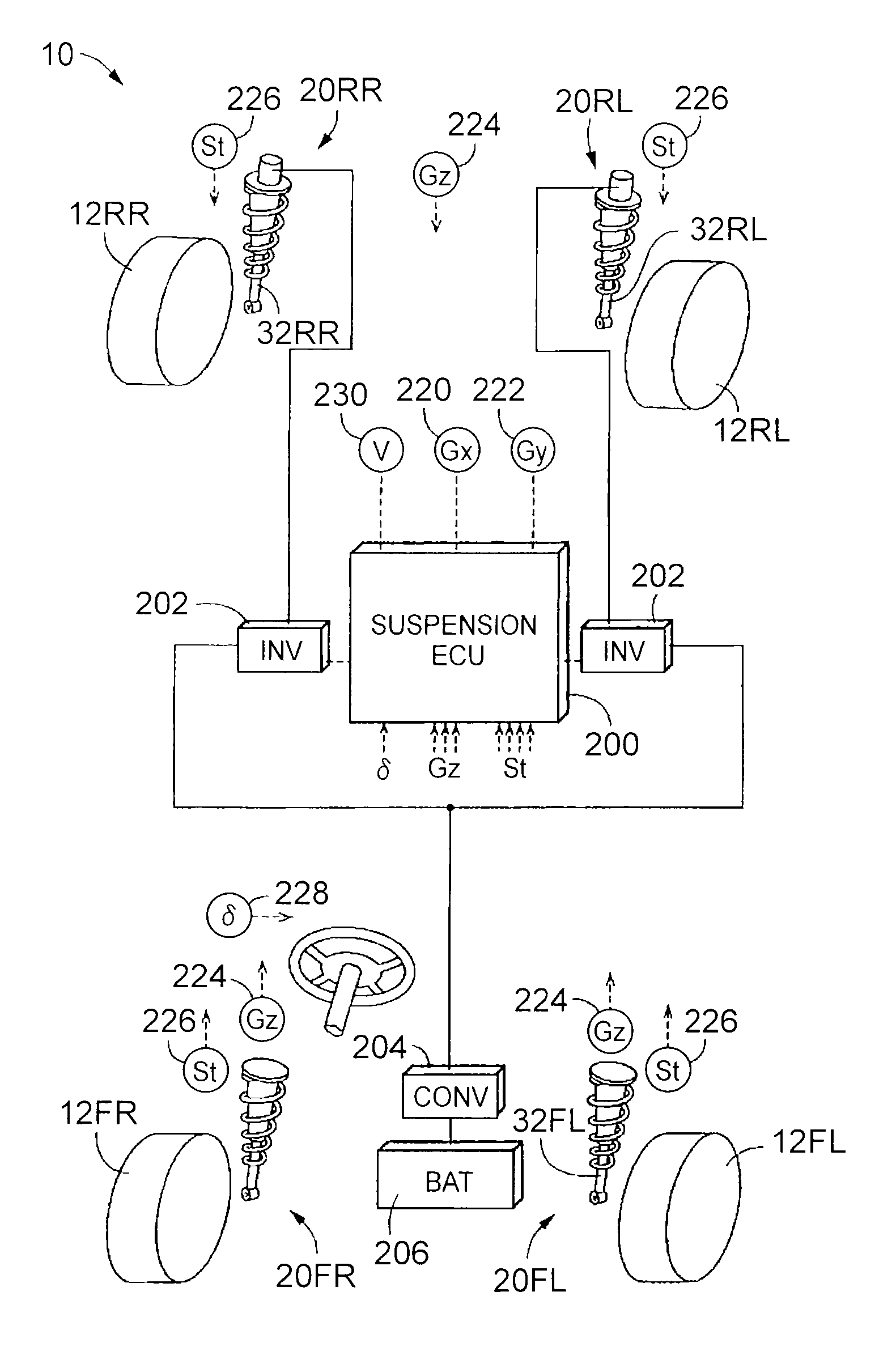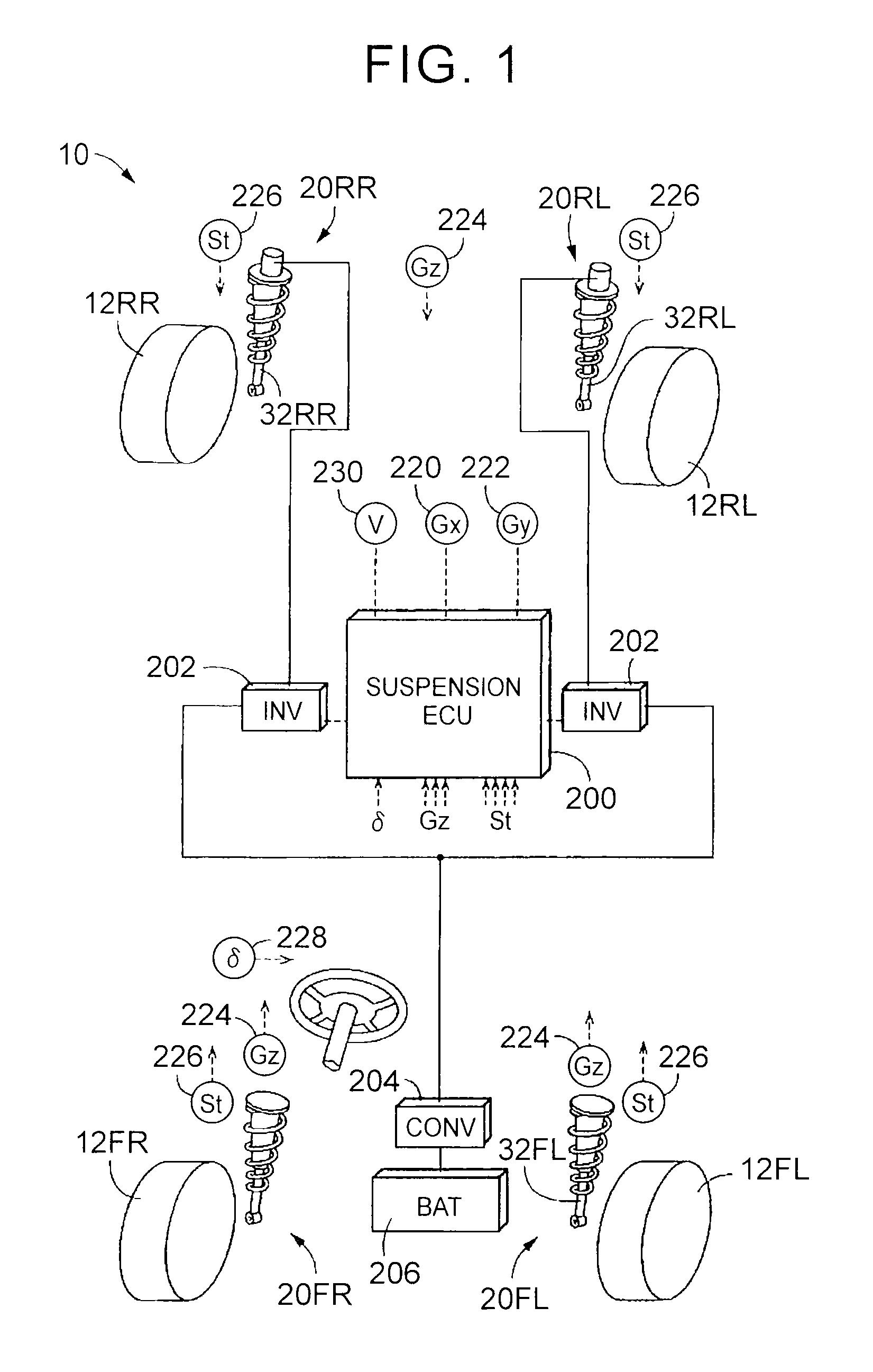Vehicle
a technology for vehicles and vehicles, applied in the field of vehicles, can solve the problems of comparatively high cost and difficulty in equipping all vehicles with such a system, and achieve the effects of enhanced steering stability and ride quality
- Summary
- Abstract
- Description
- Claims
- Application Information
AI Technical Summary
Benefits of technology
Problems solved by technology
Method used
Image
Examples
embodiment 1
Configuration of the Vehicle
[0059]FIG. 1 illustrates schematically a vehicle 10 being an embodiment of the claimable invention. A suspension system is installed in the vehicle 10. The suspension system is made up of four suspension devices 20, of independent suspension type, corresponding respectively to four wheels 12 that are disposed at four corners of the vehicle 10. Each suspension device 20 is provided between a suspension lower arm 22 that holds a wheel 12 and that makes up part of an unsprung section, and a mount section 24 that is provided in a vehicle body and that makes up part of a sprung section, such that the suspension lower arm 22 and the mount section 24 are connected by the suspension device 20. Herein, the wheels 12 and the suspension devices 20 are generic terms. In those instances where it is necessary to clarify which one from among the four wheels a given wheel 12 or a given suspension device 20 corresponds to, a suffix FL, FR, RL or RR corresponding respectiv...
embodiment 2
[0083]In the vehicle of the second embodiment, as in the case of the vehicle 10 of the first embodiment, the rear wheel-side sprung resonance frequency ωRr is set lower than the front wheel-side resonance frequency ωFr and only shock absorbers corresponding to the rear wheels 12Rr are set to have a modifiable damping coefficient. In the vehicle of the second embodiment, however, shock absorbers 250 that are provided corresponding to the rear wheels 12Rr are not of hydraulic-type, but are electromagnetic-type shock absorbers, having each an electromagnetic motor 252, that generate approach and separation forces, being forces that rely on forces generated by the electromagnetic motor 252 and that are exerted on the sprung section and the unsprung section corresponding to the shock absorbers 250, for drawing the sprung section and the unsprung section closer to or apart from each other. Except for the structure of the rear wheel-side shock absorbers and the control scheme thereof, the ...
PUM
 Login to View More
Login to View More Abstract
Description
Claims
Application Information
 Login to View More
Login to View More - R&D
- Intellectual Property
- Life Sciences
- Materials
- Tech Scout
- Unparalleled Data Quality
- Higher Quality Content
- 60% Fewer Hallucinations
Browse by: Latest US Patents, China's latest patents, Technical Efficacy Thesaurus, Application Domain, Technology Topic, Popular Technical Reports.
© 2025 PatSnap. All rights reserved.Legal|Privacy policy|Modern Slavery Act Transparency Statement|Sitemap|About US| Contact US: help@patsnap.com



